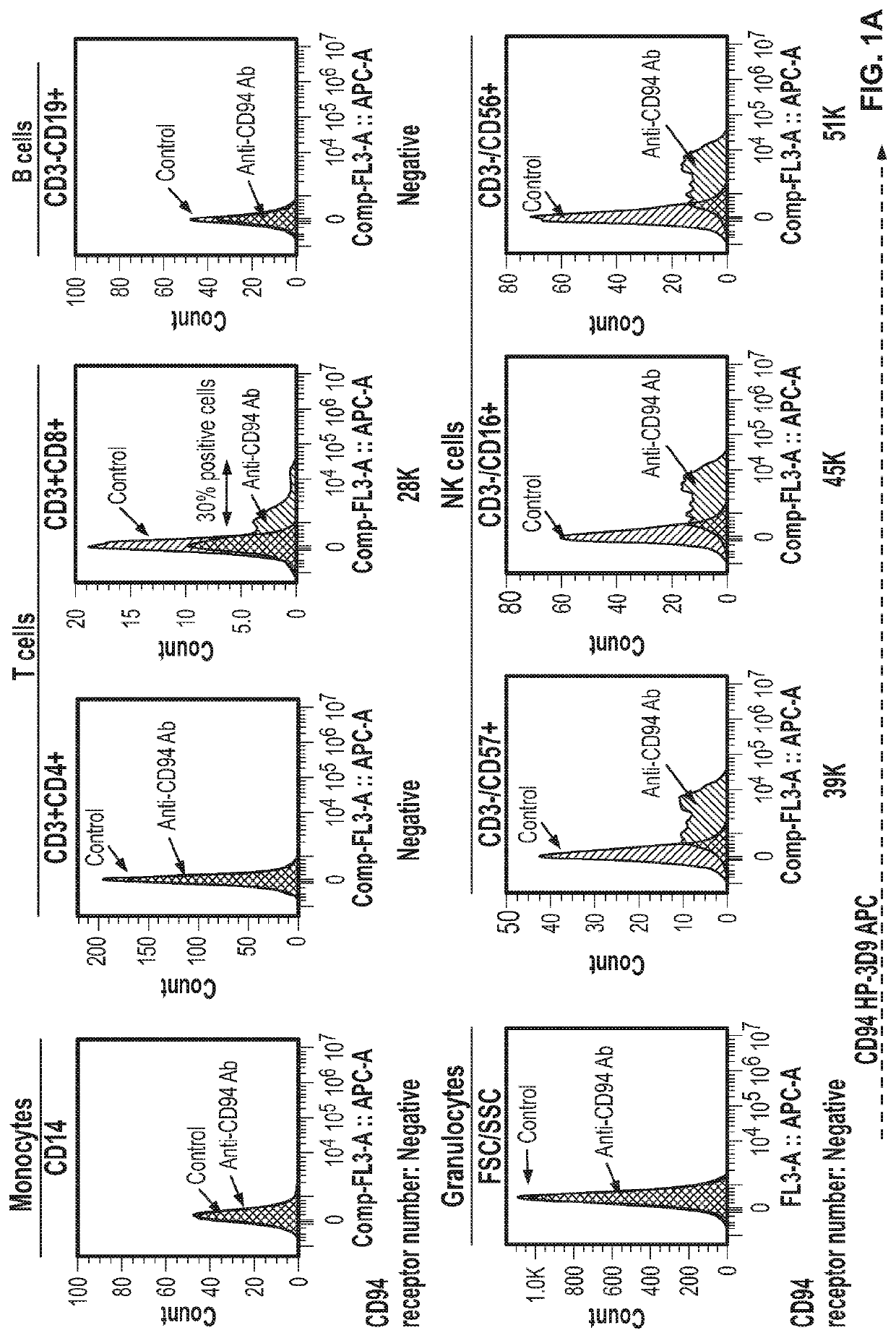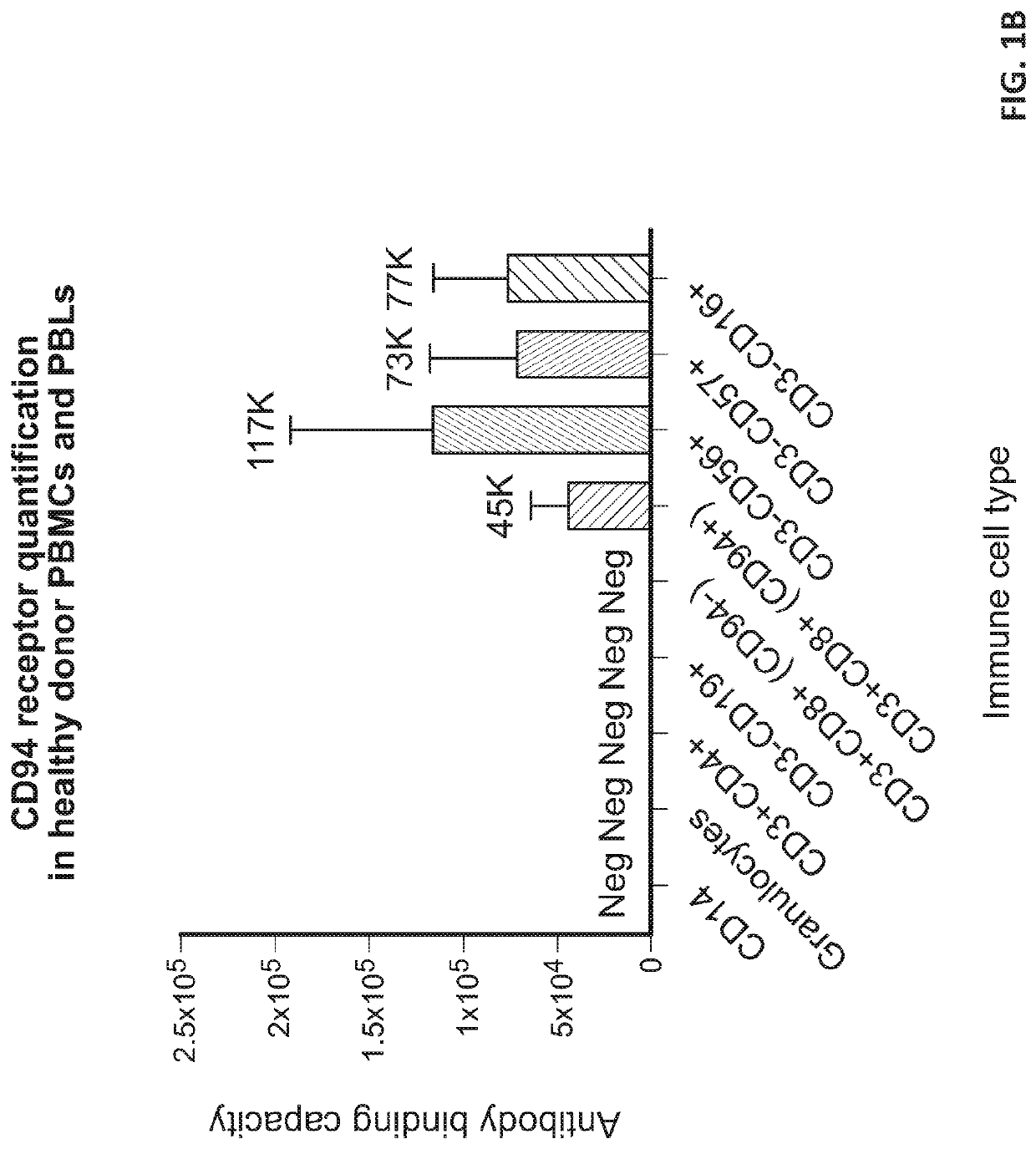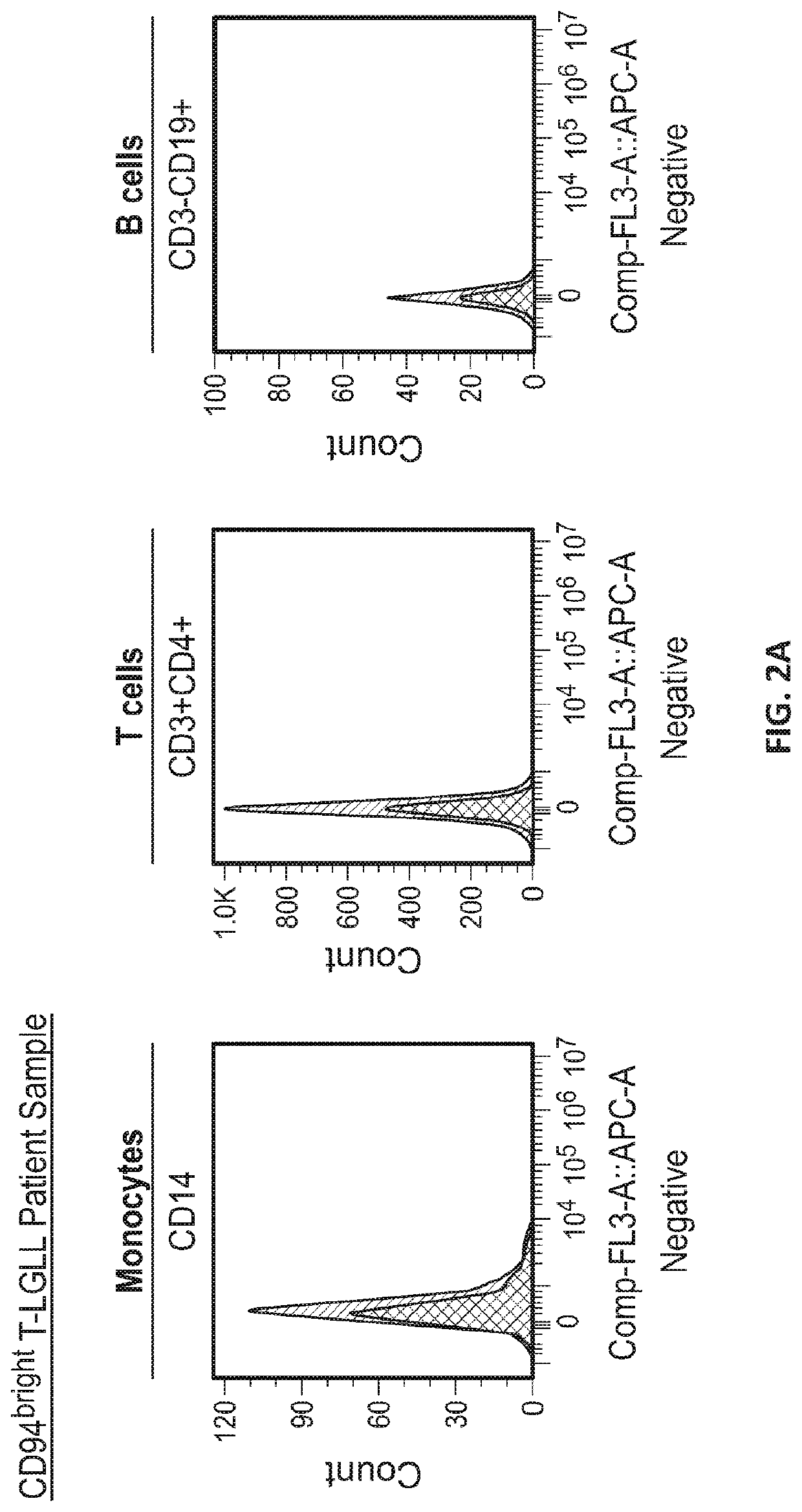Methods of reducing large granular lymphocyte and natural killer cell levels
- Summary
- Abstract
- Description
- Claims
- Application Information
AI Technical Summary
Benefits of technology
Problems solved by technology
Method used
Image
Examples
example 1
Analysis of CD94 Expression on Immune Cells from Healthy Donors and from T-large Granular Lymphocyte Leukemia (T-LGLL) and Chronic Lymphoproliferative Disorder of NK Cells (CLPD-NK) Patients
[0193]This Example describes the results of experiments to determine the level of CD94 receptor expression on immune cells obtained from healthy donors and from patients with T-LGLL and NK-LGLL.
Materials and Methods
[0194]Healthy Donors and Patient Samples
[0195]Fresh healthy donor buffy coats were obtained from Stanford Blood Center. Peripheral blood mononuclear cells (PBMCs) were isolated via ficoll-paque (GE Healthcare, Chicago, Ill.) separation and cryopreserved in Bambanker cell freezing media (Bulldog-Bio, Portsmouth, N.H.). Briefly, buffy coats were diluted in phosphate buffered saline (PBS) in a 1:1 ratio, followed by layering of the diluted buffy coat and centrifugation at 760 g in ficoll. The PBMC layer was isolated and washed in PBS prior to downstream analysis. Peripheral blood leukocyt...
example 2
Analysis of NKG2A Expression and the Effects of Anti-NKG2A Antibodies on ADCC Activity in Immune Cells from Healthy Donors and from Patients with Chronic Lymphoproliferative Disorder of NK Cells (CLPD-NK)
[0215]This Example describes the results of experiments to determine the level of NKG2A receptor expression on immune cells obtained from healthy donors and from patients with CLPD-NK. This Example also shows results of experiments that measured the effect of anti-NKG2A antibodies on antibody-dependent cellular cytotoxicity (ADCC).
Materials and Methods
[0216]Antibody-Dependent Cellular Cytotoxicity Assay
[0217]Approximately 1×105-2×105 fresh or frozen PBMCs were plated in tissue culture-treated 96-well U bottom plates in RPMI with 10% low IgG FBS. The cells were incubated overnight in 10-fold dilutions of human IgG1 isotype control antibody, NKG2A Z199 fucosylated antibody, or NKG2A Z199 non-fucosylated antibody, with antibody concentrations ranging from 101-10−6 μg / ml. The cells were...
example 3
Analysis of NKG2A and CD94 Expression on Liver-Derived Cells
[0227]This Example describes the results of experiments to determine the level of CD94 and NKG2A receptor expression on liver-derived immune cells obtained from healthy donors.
[0228]Materials and Methods
[0229]Single and live liver-derived cells (CD45−) and lymphocyte populations (CD45 / CD4 / CD8 / CD19 / CD56+) were analyzed by flow cytometry as described in Example 1.
[0230]Results
[0231]Single and live liver-derived cells (CD45−) and lymphocyte populations (CD45 / CD4 / CD8 / CD19 / CD56+) were examined to screen for CD94 and NKG2A expression. As shown in FIG. 8A, CD94 was highly expressed on NK cells of a normal liver sample, with approximately 200,000 CD94 receptors per cell. CD94 expression was also present on a subset of T-cells (CD45+CD3+CD4+ / CD8+). CD94 expression was not detected on epithelial cells (CD45−) and B cells (CD45+CD3-CD19+). As shown in FIG. 8B, NKG2A was only detected on NK cells, with a receptor number of 200,000. Ove...
PUM
| Property | Measurement | Unit |
|---|---|---|
| Fraction | aaaaa | aaaaa |
| Time | aaaaa | aaaaa |
| Time | aaaaa | aaaaa |
Abstract
Description
Claims
Application Information
 Login to View More
Login to View More - R&D
- Intellectual Property
- Life Sciences
- Materials
- Tech Scout
- Unparalleled Data Quality
- Higher Quality Content
- 60% Fewer Hallucinations
Browse by: Latest US Patents, China's latest patents, Technical Efficacy Thesaurus, Application Domain, Technology Topic, Popular Technical Reports.
© 2025 PatSnap. All rights reserved.Legal|Privacy policy|Modern Slavery Act Transparency Statement|Sitemap|About US| Contact US: help@patsnap.com



